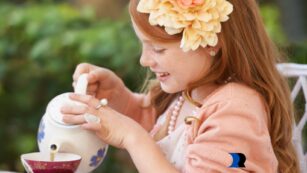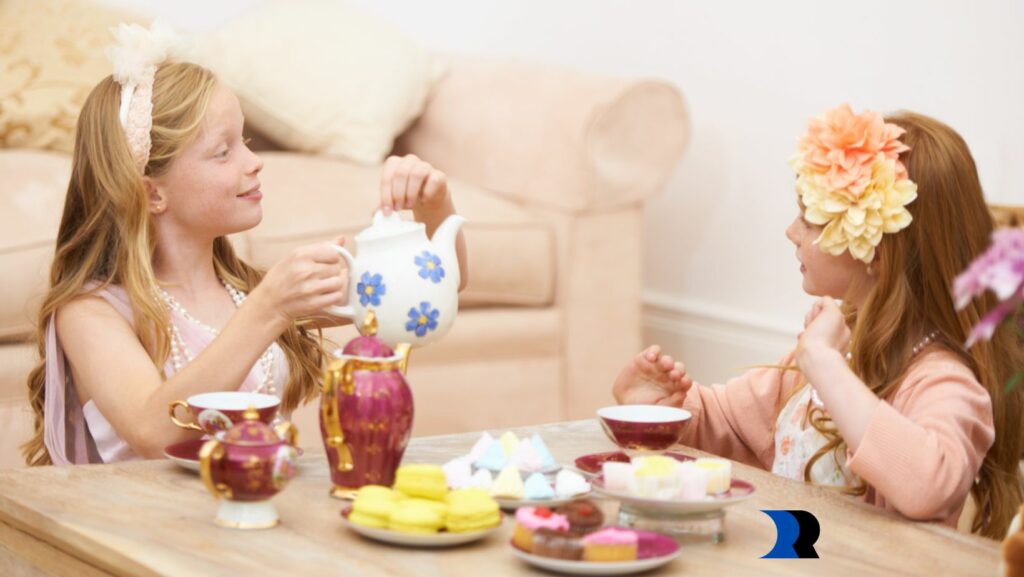Imagine a room filled with laughter, delicate teacups, and an array of colorful hats. Hosting a tea party for kids can be a delightful affair, especially when infused with engaging games that keep the little guests entertained. From classic activities with a twist to creative new challenges, tea party games can transform a simple gathering into a memorable adventure.
Tea Party Games for Kids
Tea party games for kids enhance the fun of a tea-time gathering, making it memorable and engaging. These games are tailor-made to fit the youthful atmosphere and encourage interactive play.
Age Appropriatness
 When selecting games for a kids’ tea party, it’s crucial to consider the age range of the attendees. Games like “Pass the Teapot,” which involves passing a small teapot filled with marbles, are ideal for children aged 5 to 8 years, as they combine simple rules with a light physical activity. For older children, ages 8 to 12, tea-themed treasure hunts that involve solving riddles to find hidden items can provide a more challenging and stimulating experience. These activities ensure that every child participates and remains engaged throughout the party.
When selecting games for a kids’ tea party, it’s crucial to consider the age range of the attendees. Games like “Pass the Teapot,” which involves passing a small teapot filled with marbles, are ideal for children aged 5 to 8 years, as they combine simple rules with a light physical activity. For older children, ages 8 to 12, tea-themed treasure hunts that involve solving riddles to find hidden items can provide a more challenging and stimulating experience. These activities ensure that every child participates and remains engaged throughout the party.
Safety Considerations
Safety is paramount when organizing games for any children’s event. For indoor games like “Tea Party Bingo” or craft-making sessions, ensure there are no sharp tools involved, and that materials used are non-toxic and child-friendly. In games requiring movement, such as “Musical Chairs” with a tea party twist, clear the space of any obstacles to prevent trips and falls. Furthermore, in treasure hunts or any outdoor activity, check the area for potential hazards and keep all games within a secured perimeter. These safety measures guarantee a safe and enjoyable environment for all participants.
Popular Tea Party Games for Kids
The right games can transform a simple tea party into a memorable adventure for kids. Here, interactive and themed party games engage young guests and keep the fun brewing.
Tea Party Relay Races
 Tea Party Relay Races create an exciting challenge that involves speed and balance. Kids form teams and race to complete tasks such as balancing a teacup on a book while walking a certain distance or assembling a faux tea set as quickly as possible. If a player spills the contents of their teacup, they start over, adding a gentle level of difficulty suited for younger participants.
Tea Party Relay Races create an exciting challenge that involves speed and balance. Kids form teams and race to complete tasks such as balancing a teacup on a book while walking a certain distance or assembling a faux tea set as quickly as possible. If a player spills the contents of their teacup, they start over, adding a gentle level of difficulty suited for younger participants.
Pass the Teacup
Pass the Teacup is a musical-chairs-inspired game, where children sit in a circle and pass a teacup around while music plays. When the music stops, the child holding the cup performs a small, fun task, such as reciting a nursery rhyme or wearing a silly hat for the next round. This game is perfect for indoor settings and helps develop children’s listening skills and quick thinking.
Tea Leaf Treasure Hunt
Expanding on traditional hide-and-seek mechanics, the Tea Leaf Treasure Hunt involves hiding small tea-themed objects around the party area. Each child receives a list of items to find, such as decorated spoons, colored sugar cubes, or miniature teapots. This game serves dual purposes: it keeps children actively engaged and encourages teamwork if played in pairs or groups.
Creative Ideas for Tea Party Games
 Engaging games are essential for any successful kids’ tea party, offering entertainment and interaction tailored to young guests. They can transform a simple gathering into an extraordinary adventure, encouraging lively participation and memorable moments. The selected games not only captivate but also cater to various age groups, ensuring inclusivity and safety.
Engaging games are essential for any successful kids’ tea party, offering entertainment and interaction tailored to young guests. They can transform a simple gathering into an extraordinary adventure, encouraging lively participation and memorable moments. The selected games not only captivate but also cater to various age groups, ensuring inclusivity and safety.
Design Your Own Teacup
“Design Your Own Teacup” stands out as a creative, hands-on activity that allows children to express their artistic talents. Participants receive plain white teacups and safe, washable markers or paints, enabling them to decorate their cups with colorful designs, patterns, and characters. This game serves dual purposes: it fosters creativity and gives children a unique party favor to take home.
Materials are pre-arranged on a decorating station, where children can easily access all items they require without assistance, promoting independence and decision-making. Supervisors ensure that all materials used are non-toxic and suitable for use by children, ensuring a worry-free environment for their creativity.

